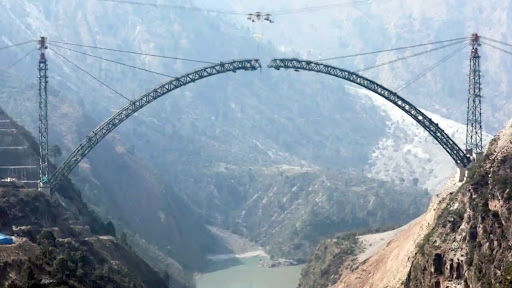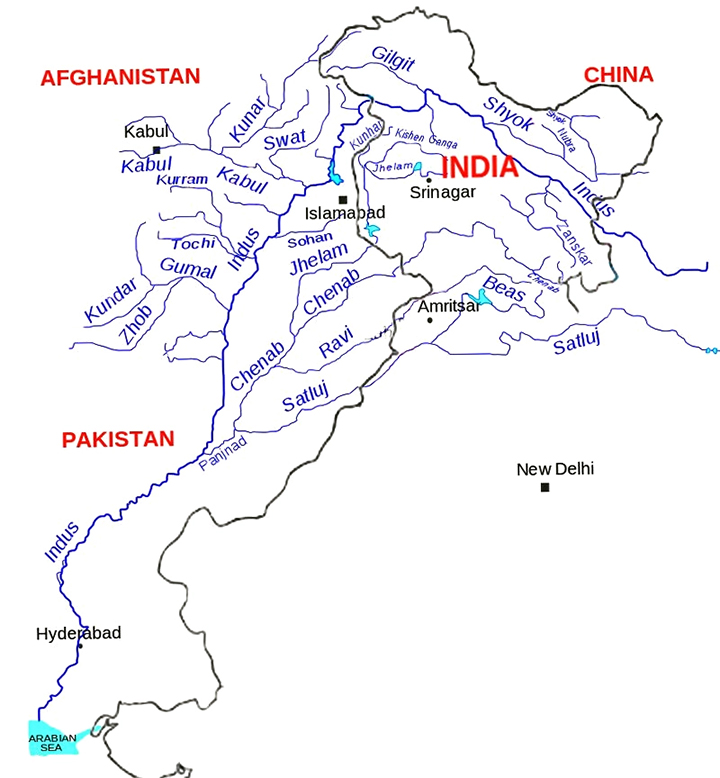Solar Power Park in India- UPSC FACTS
GS-Paper-3 Renewable Energy – Infrastructure development- Prelims & UPSC Interview
Context: Renewable energy mainly solar energy is the most important topic of discussion in 21st Century, when the World has faced the problem of Climate change and energy security. This topic is highly important for UPSC mains examination under Paper-3 Infrastructure and Energy security.
India lying in a tropical belt has the advantage of receiving peak solar radiation for 300 days, amounting to 2300-3,000 hours of sunshine equivalent to above 5,000 trillion kWh.
- India’s current installed solar power capacity, according to the Central electricity authority, is 26025.97 MW which is 34% of total renewable energy sources i.e, 75055.92 MW till February 2019.
- With its pollution-free nature, virtually inexhaustible supply and global distribution, solar energy is a very attractive energy resource.
- India's Intended Nationally Determined Contributions (INDC’s) commitment includes 100 GW of solar power out of 175 GW of renewable energy by 2022.
There are more than 40 Major Solar power plants in India, which generate at least 10 MW of power.
Below-table gives the list of 10 major solar power parks in India
|
Sl.No
|
Solar Power Park in India
|
|
1
|
Bhadla Solar Park, Rajasthan
|
|
2
|
Pavagada Solar Park, Karnataka
|
|
3
|
Kurnool Ultra Mega Solar Park, Andhra Pradesh
|
|
4
|
NP Kunta, Andhra Pradesh
|
|
5
|
Rewa Ultra Mega Solar, Madhya Pradesh
|
|
6
|
Charanka Solar Park, Gujarat
|
|
7
|
Kamuthi Solar Power Project, Tamil Nadu
|
|
8
|
Ananthapuramu – II, Andhra Pradesh
|
|
9
|
Galiveedu solar park, Andhra Pradesh
|
|
10
|
Mandsaur Solar Farm, Madhya Pradesh
|
Major Solar Power Plants in India – Brief Details
Bhadla Solar Park
- Bhadla Solar Park is the world’s largest solar park located in India which is spread over a total area of 14,000 acres in Bhadla, Phalodi tehsil, Jodhpur district, Rajasthan, India.
- The region has been described as “almost unlivable” due its climate. Average temperatures in Bhadla hover between 46 and 48 degrees Celsius. Hot winds and sand storms occur frequently. Bhadla is a sandy, dry and arid region with an area of about 45 km2.
- The Solar park has a total capacity of 2,245 MW.
- When its full capacity is operational, the park will become the world’s largest fully commissioned PV project, with investment rising to Rs 10,000 crore (US$1.3 billion).
Pavagada Solar Park
- Pavagada Solar Park is a solar park covering an area of 53 square kilometres (13,000 acres) in Pavagada taluk, Tumkur district, Karnataka.
- The Solar Power park has a capacity of 2,050 MW and is the World’s second largest photovoltaic solar park after the 2245 MW Bhadla Solar Park in Rajasthan.
- It was completed in 2019.
Kurnool Ultra Mega Solar Park
- Kurnool Ultra Mega Solar Park is a solar park spread over a total area of 5,932.32 acres in Panyam Mandal of Kurnool district, Andhra Pradesh, with a capacity of 1,000 MW.
- The park was built at an investment of around? 7,000 crores (US$980 million) by solar power developers and the Central and State governments.
- It was commissioned on 29 March 2017 and is owned by Andhra Pradesh Solar Power Corporation Private Limited (APSPCL).
NP Kunta Ultra Mega Solar Park
- The NP Kunta Ultra Mega Solar Park, also known as Ananthapuram Ultra Mega Solar Park, is a solar park spread over a total area of 7,924.76 acres in Nambulapulakunta Mandal in the Ananthapur district of the Indian state of Andhra Pradesh.
- It was commissioned in May 2016 and is owned by Andhra Pradesh Solar Power Corporation Private Limited (APSPCL).
Rewa Ultra Mega Solar
- Rewa Ultra Mega Solar is the first solar project in the country to break the grid parity barrier. It is one of the largest solar power plants in India and Asia’s Largest Single site solar plant.
- Rewa Ultra Mega Solar Limited (RUMSL), the implementing agency of the project, is a joint venture between the Madhya Pradesh Urja Vikash Nigam Limited (MPUVNL) and the Solar Energy Corporation of India (SECI).
- Rewa is the first project in India to be supplying power to an inter-state open access customer, viz., Delhi Metro. This is also the first project in India where solar power would be used for railway traction.
- The project got the World Bank Group’s President’s Award for excellence for its transaction structure.
Charanka Solar Park
- Gujarat Solar Park-1 (also called Charanka Solar Park) is currently in the process of development on a 2,000-hectare (4,900-acre) plot of land near Charanka village in Patan district, northern Gujarat.
Kamuthi Solar Power Project
- Kamuthi Solar Power Project is a photovoltaic power station spread over an area of 2,500 acres in Kamuthi, Ramanathapuram district, 90 km from Madurai, in the state of Tamil Nadu, India.
Kadapa Ultra Mega Solar Park
- Kadapa Ultra Mega Solar Park is a solar park spread over a total area of 5,927.76 acres in the Mylavaram Mandal of Kadapa district, Andhra Pradesh. The project is being implemented by the Andhra Pradesh Solar Power Corporation Private Limited (APSPCL), a joint venture of Solar Energy Corporation of India (SECI), Andhra Pradesh Power Generation Corporation and the New & Renewable Energy Development Corporation of Andhra Pradesh Ltd.
Ultra Mega Solar Power Projects
- Ultra Mega Solar Power Projects, also known as Ultra Mega Solar Parks, are a series of solar power projects planned by the Ministry of New and Renewable Energy of the Union Government of India.
- In December 2014, the Government of India introduced a scheme to establish at least 25 solar parks and Ultra Mega Solar Power Projects, adding over 20 GW of installed solar power capacity. The Central Government provides financial support for the construction of these solar projects.
Technology
- Solar Photovoltaic: Solar photovoltaic (SPV) cells convert solar radiation (sunlight) into electricity. A solar cell is a semi-conducting device made of silicon and/or other materials, which, when exposed to sunlight, generates electricity.
- Solar thermal: Solar Thermal Power systems, also known as Concentrating Solar Power systems, use concentrated solar radiation as a high-temperature energy source to produce electricity using the thermal route.
Advantages
- Low running costs & grid tie-up capital returns-Net Metering.
- Unlike conventional thermal power generation from coal, they do not cause pollution and generate clean power.
- The abundance of free solar energy in almost all parts of the country.
- No overhead wires- no transmission loss
- Solar Energy is available throughout the day which is the peak load demand time.
- Solar energy conversion equipment has a longer life and needs lesser maintenance and hence provides higher energy infrastructure security.
Government initiatives
- The Ministry of new and renewable energy is the nodal agency to tackle India's renewable energy issues.
- National Solar Mission is a major initiative of the Government of India and State Governments to promote ecologically sustainable growth while addressing India's energy security challenge.
- The Indian Renewable Energy Development Agency (IREDA) is a Non-Banking Financial Institution under the administrative control of this Ministry for providing term loans for renewable energy and energy efficiency projects.
- The national institute of solar energy is created as an autonomous institution under MoNRE is apex body for R&D.
- Establishment of solar parks and ultra major solar power projects and enhancing grid connectivity infrastructure.
- Promotion of canal bank and canal tank solar infrastructure.
- Sustainable rooftop implementation of Solar transfiguration of India (SRISTI) scheme to promote rooftop solar power projects in India.
- Suryamitra programme to prepare a qualified workforce.
- Renewable purchase obligation for large energy consumer customers.
- National green energy programme and green energy corridor.

